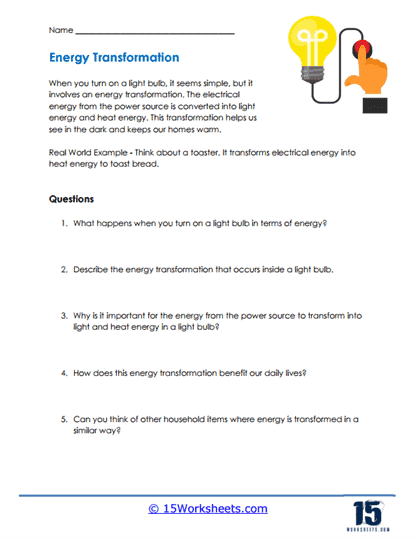Household Energy

Worksheet Description
This worksheet delves into the concept of energy transformation with a focus on everyday household items. It underscores the mechanism behind lighting a bulb, illustrating how electrical energy from a power source converts into both light and heat energy. Additionally, it introduces another example using a toaster, where electrical energy is transformed into heat energy to toast bread. A series of questions then invites learners to contemplate and elucidate these transformations and their implications in our daily lives.
To grasp the concept of energy transformation in household items, one must first observe the item in operation. Taking the light bulb as an instance, when it’s switched on, one should identify the initial input, which is electrical energy, and then discern its conversion into light and possibly heat. This transformation is guided by the design and functionality of the item, such as a filament in a traditional bulb or LEDs in modern bulbs. Repeated observations and analysis of various household appliances, like toasters or electric stoves, can solidify one’s understanding of energy conversions in everyday settings.
The primary goal of this worksheet is to enlighten students about the omnipresence of energy transformations in their daily environment. It aims to demystify the processes behind common household appliances, allowing students to relate abstract energy concepts to tangible experiences. Through the provided questions, the worksheet fosters a deeper understanding of the importance of these energy conversions, especially in facilitating our modern comforts and conveniences. Furthermore, it encourages students to think critically about other household items where similar energy transformations might occur, promoting observation and inquiry-based learning.
